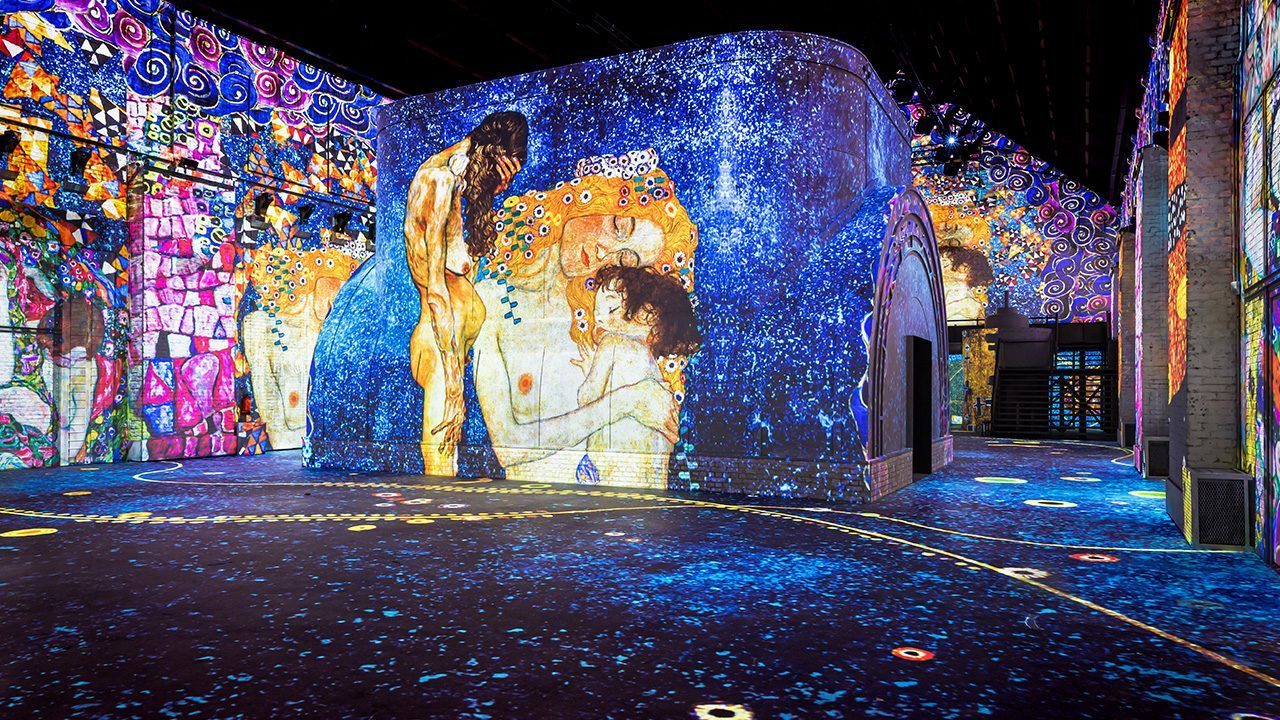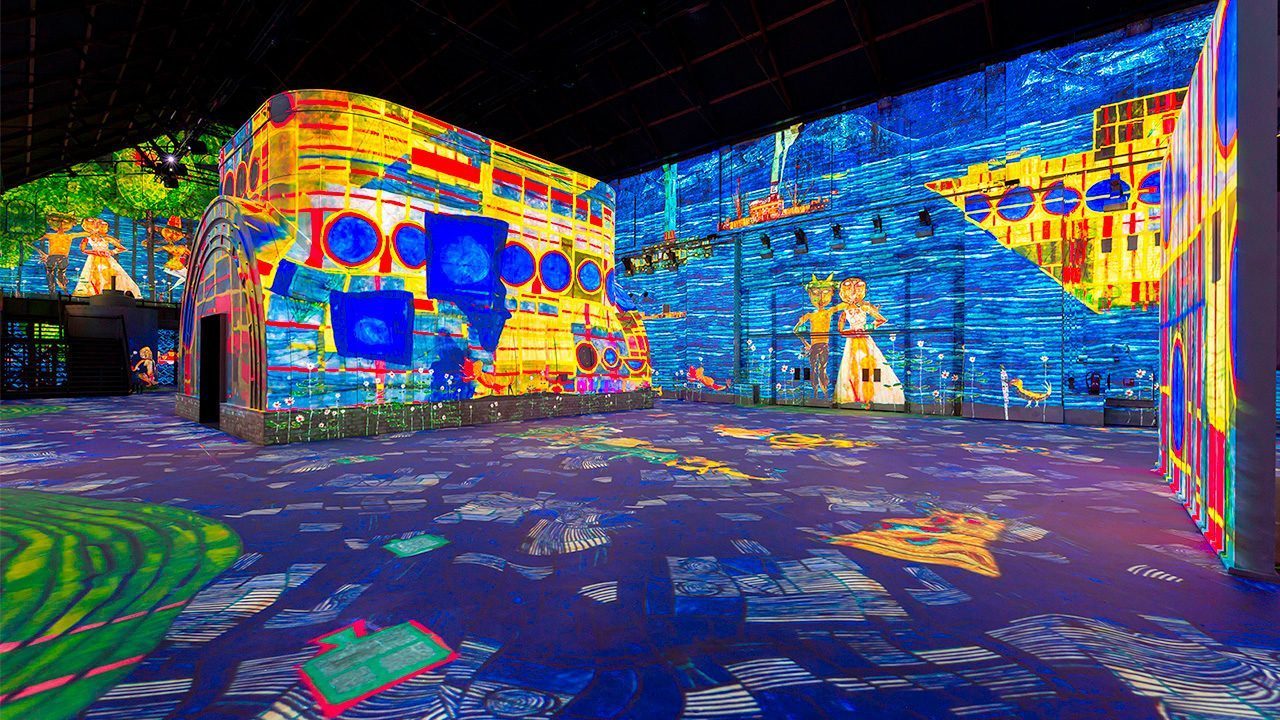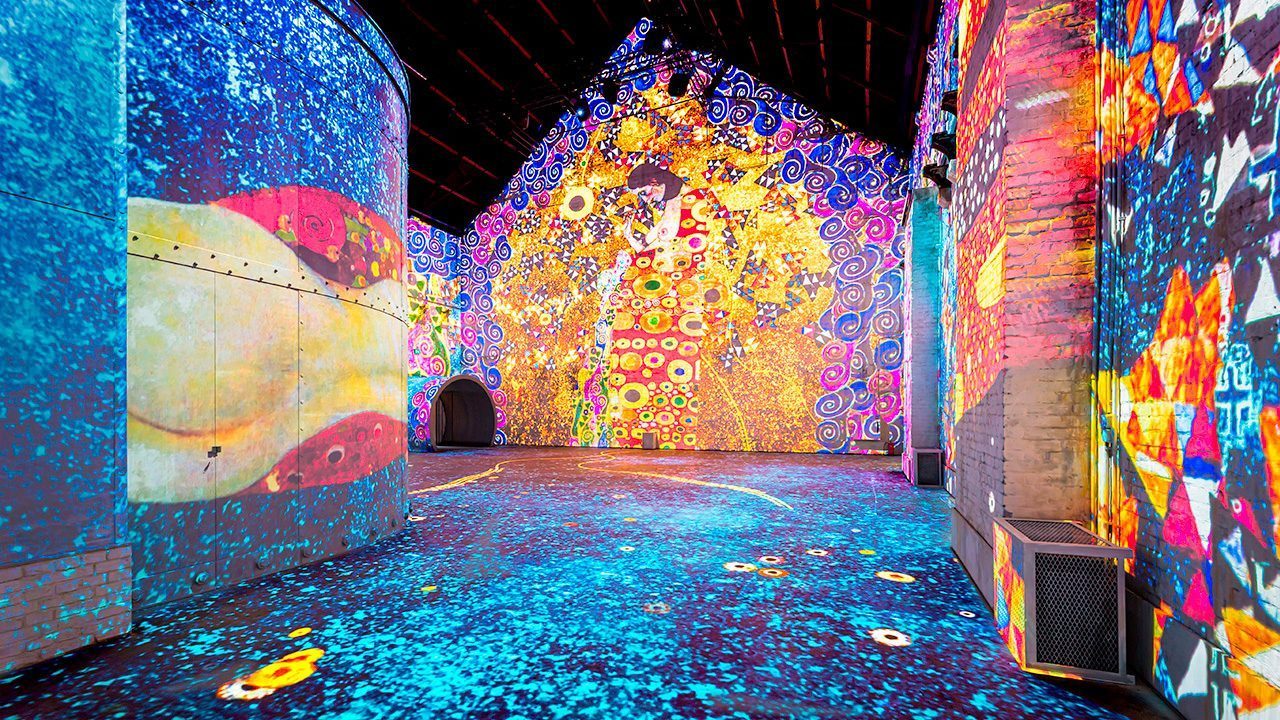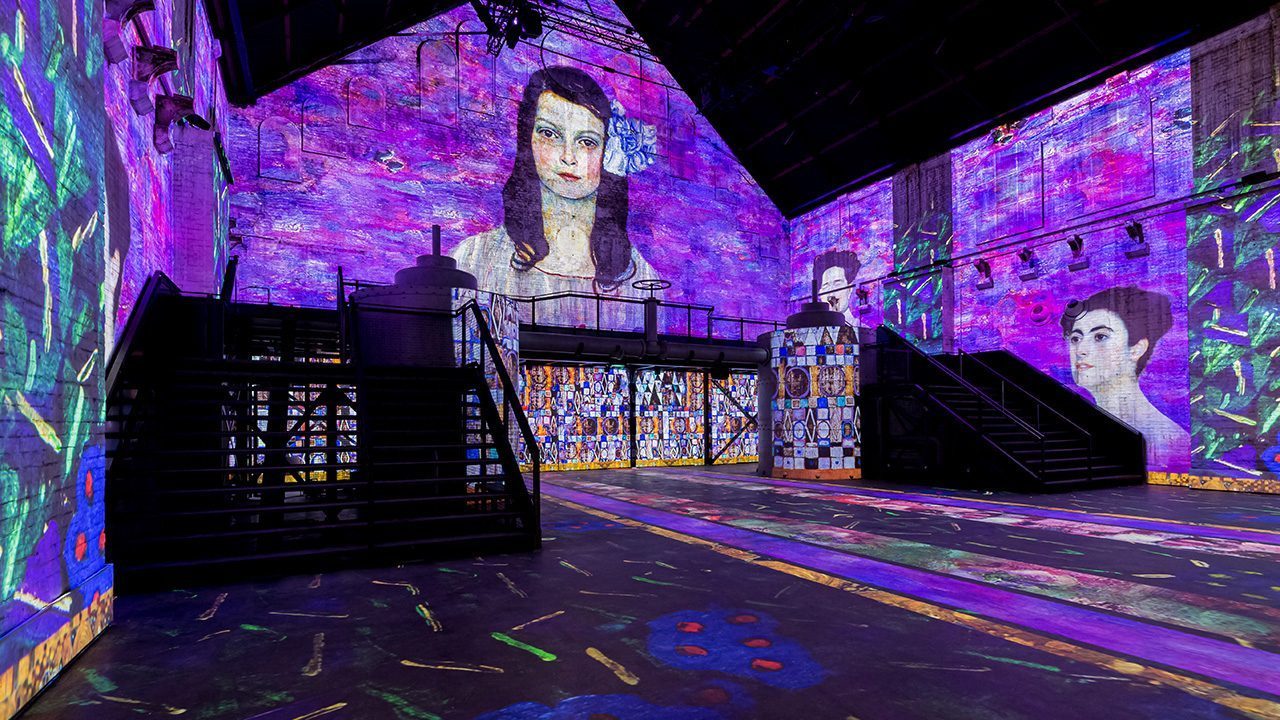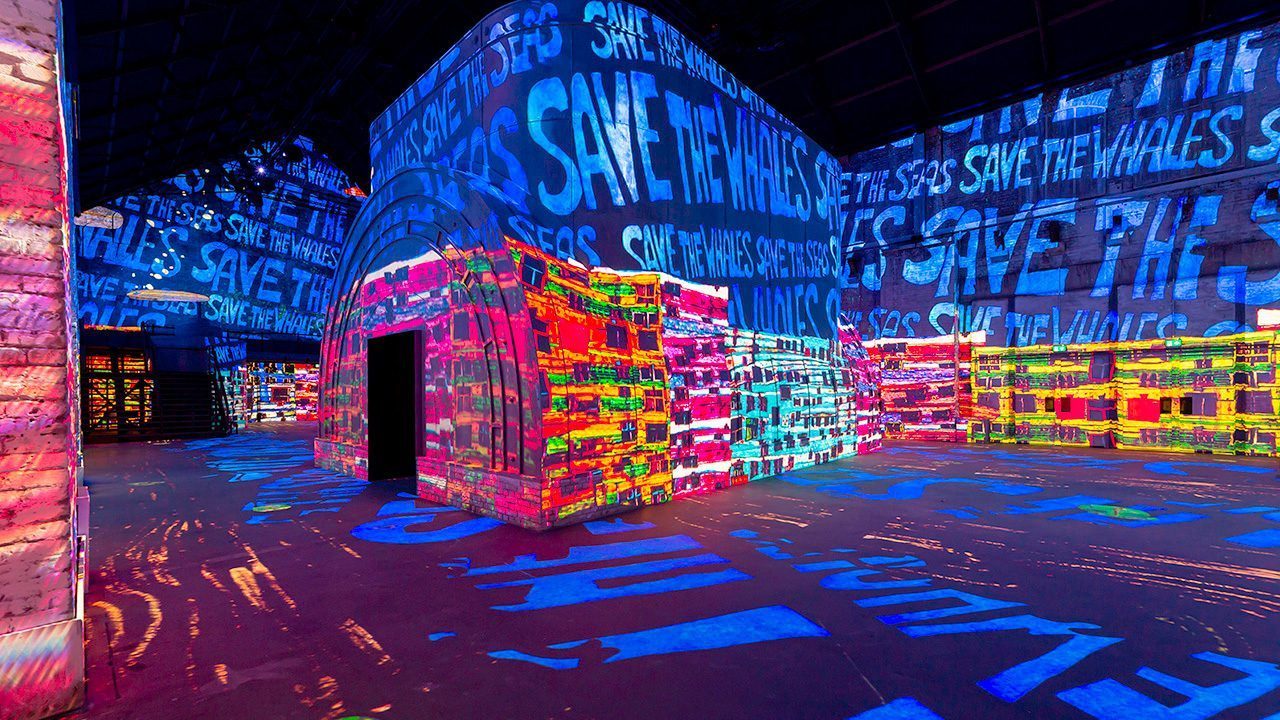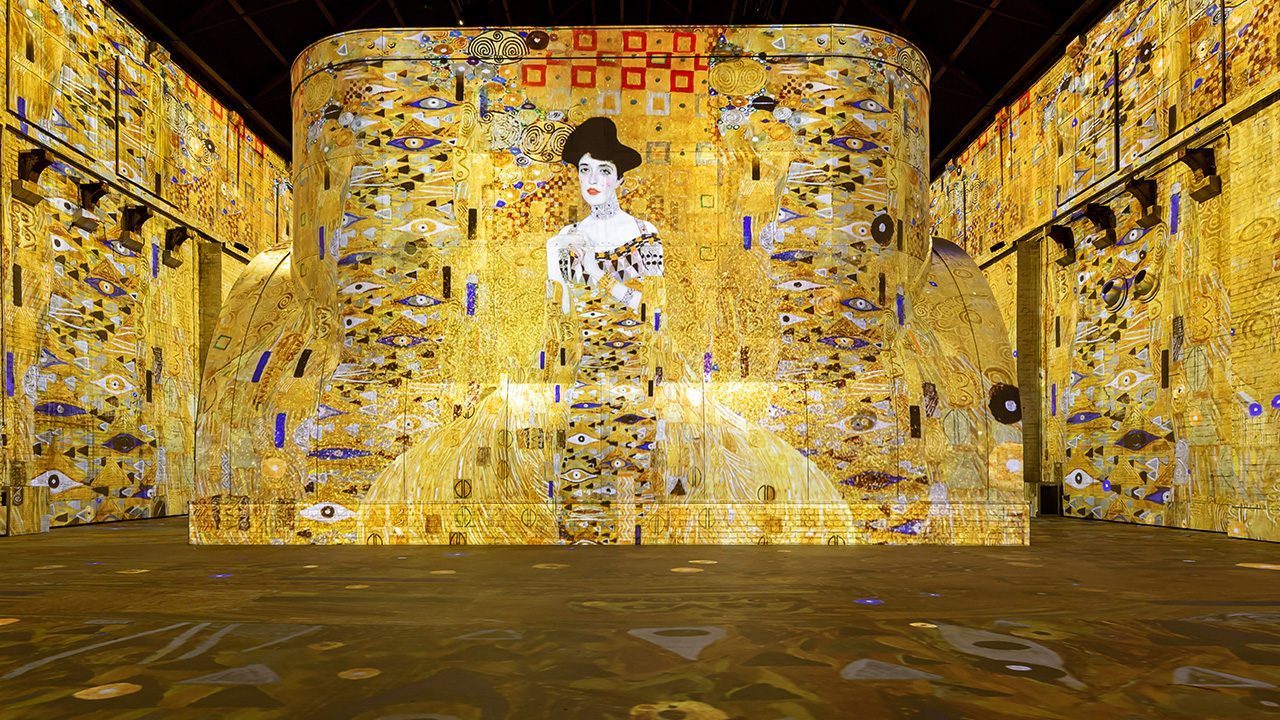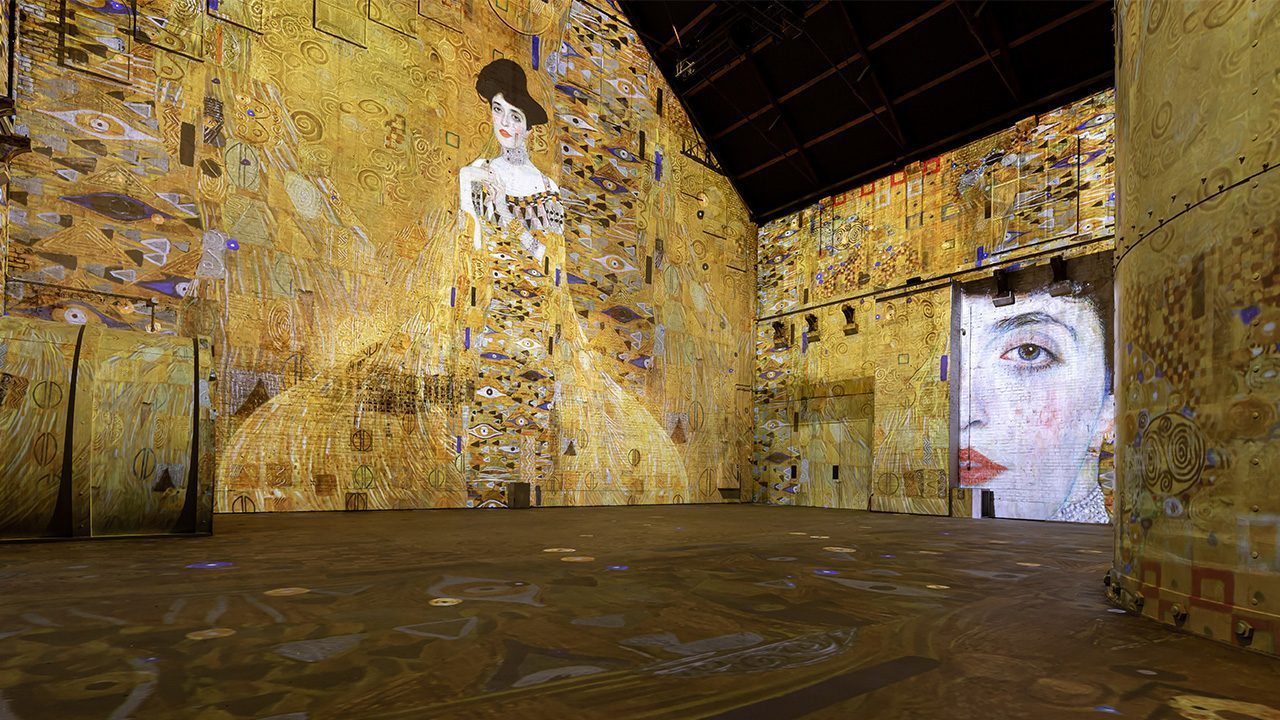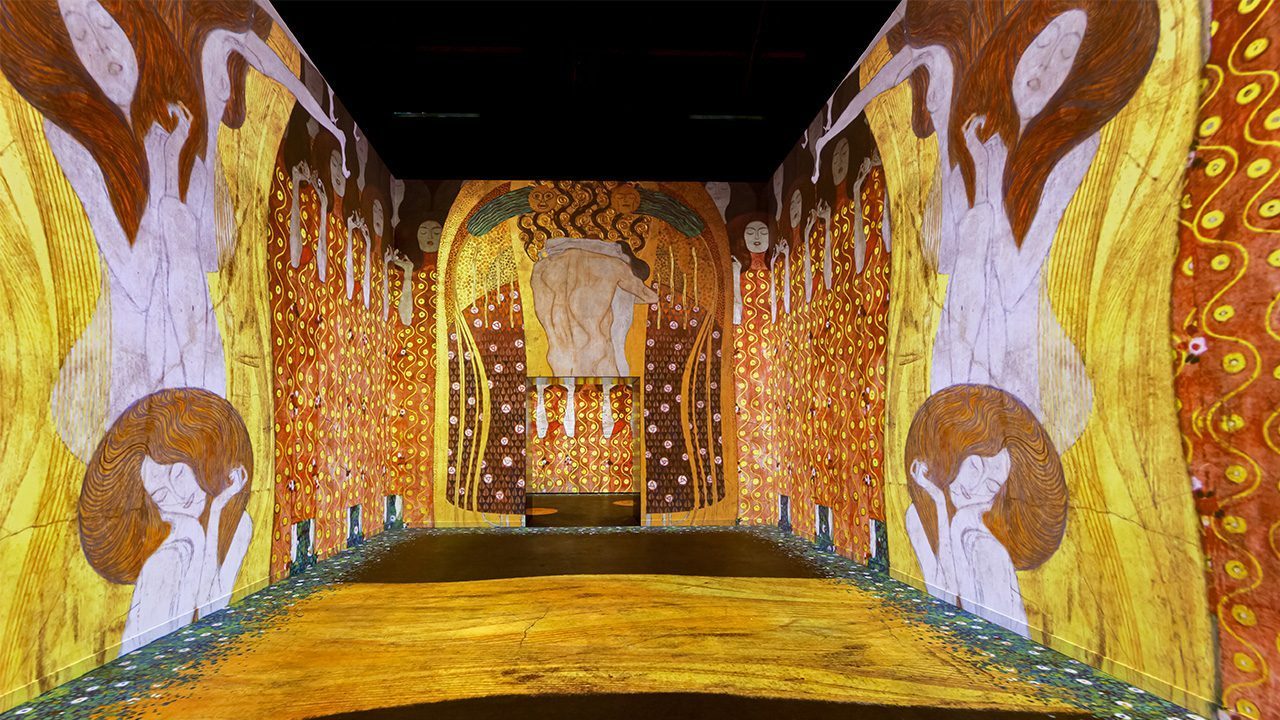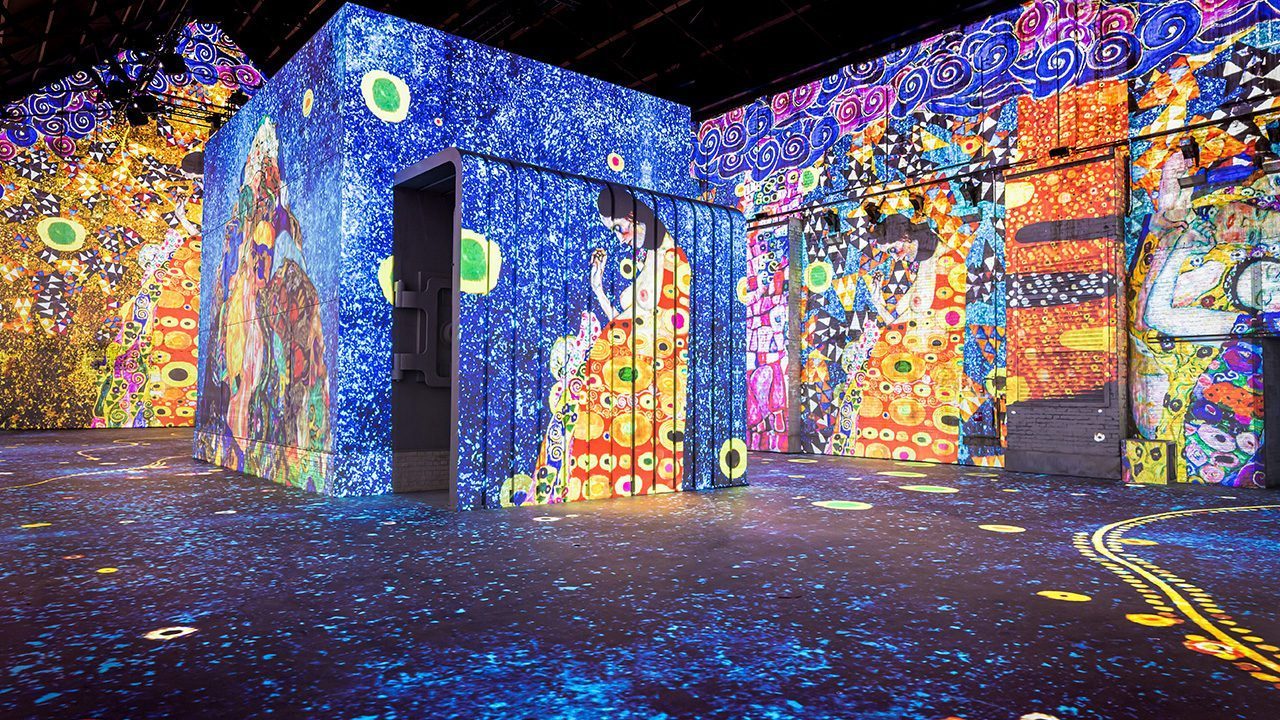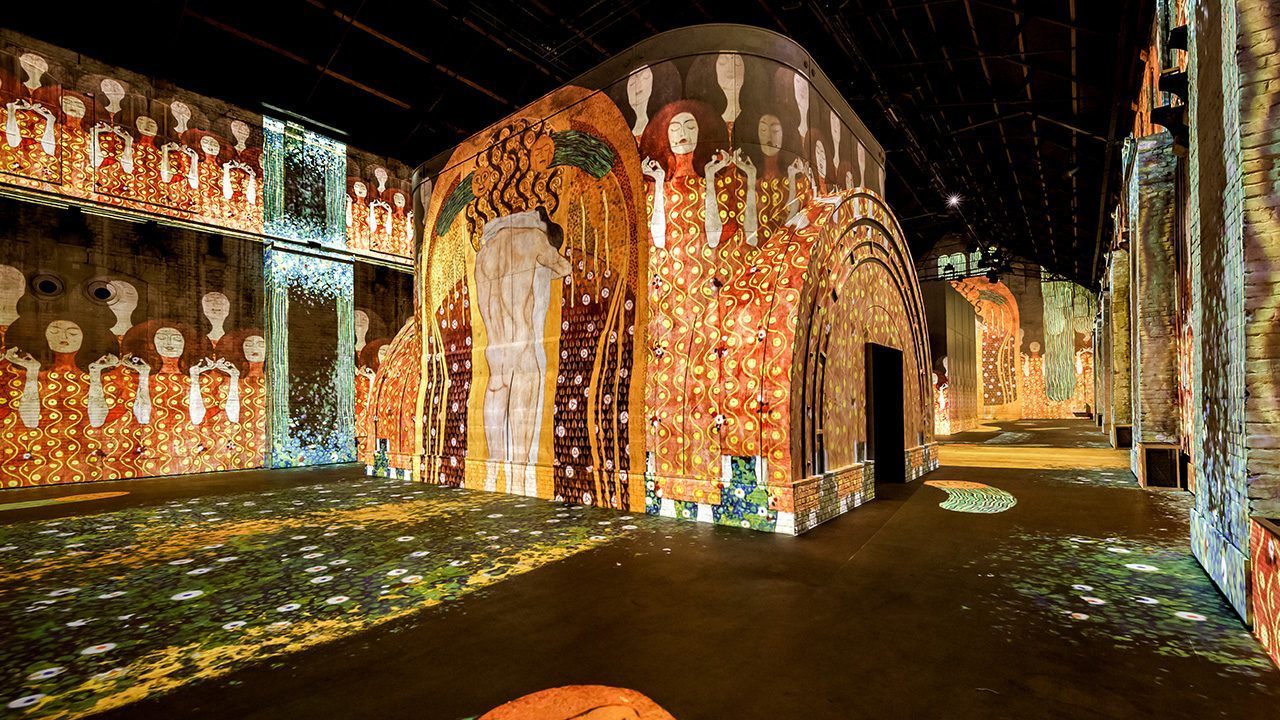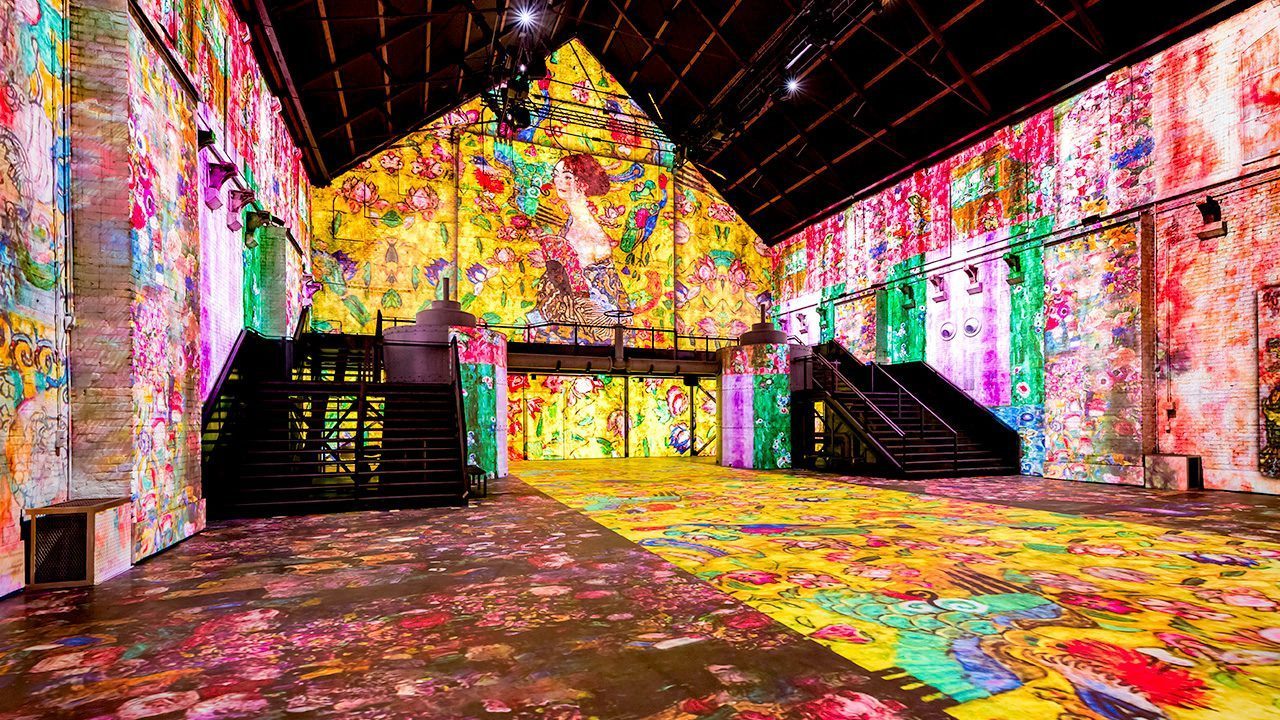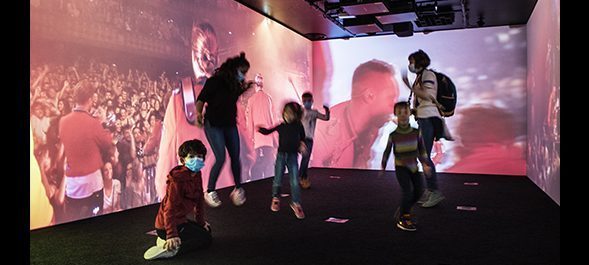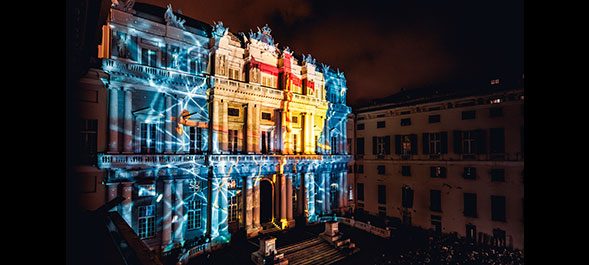AV integrator: Cadmos
Interactive exhibition: Holymage
Main and short exhibitions:
Production: Culturespaces Digital
Creative Director: Gianfranco Iannuzzi
Graphic & Animation Design: Cutback
Interactivity enters Fabrique des Lumières with Modulo Kinetic
End of April 2022, Culturespaces inaugurated the Fabrique des Lumières, its sixt digital art center. Located in Amsterdam Zuiveringshal, the new venue features immersive exhibitions of classical, modern, and contemporary artists. The immersion relies on a solid AV system consisting of 102 x video-projectors, 33 x Modulo Kinetic media servers by Modulo Pi, and spatial audio. To further enhance the experience and for the very first time, Culturespaces created an interactive section at the heart of the venue, based on Modulo Kinetic’s brand-new features.
Established in a former gasworks in Amsterdam, Fabrique des Lumières is the newest digital art center initiated by Culturespaces, known for founding Atelier des Lumières in Paris.
First contact with the Gasfabriek was made in 2017. Five years later, following major renovation work and complete AV integration, the Fabrique des Lumières opened to the public at the end of April 2022.
Within the Dutch Neo-Renaissance historic building, visitors can enjoy an immersion in the works of Gustav Klimt and his contemporaries through 1,350 sqm. The immersive experience is based on a monumental projection onto all walls and the floor, enhanced with a spatialized sound system.
The projection area is 3,800 sqm, with part of the walls reaching 17 meters high. Video-projection relies on 102 x Epson PU2010 and PU1008 projectors, powered by the Modulo Kinetic media server by Modulo Pi. The kit consists in 3 x Modulo Kinetic Designer workstations, and 30 x Modulo Kinetic V-Node servers equipped with 4 outputs.
As for all its digital art centers, Culturespaces and AV integrator Cadmos selected Modulo Kinetic for the project, allowing a seamless projection of the immersive exhibitions across the 19th century historic building.
Teams of Cadmos used the media server throughout the project workflow, including study, simulation, edge blending, outputs warping, media playback and show control.
In addition to the regular projections, Culturespaces created an interactive area at the heart of the exhibition hall. The introduction of interactivity within the immersive experience was carefully thought through. Glen Loarer, Production Manager at Culturespaces, explains: “We’re looking into ways to enrich the visitors’ experience without altering the main immersive exhibition. Interactivity comes as a plus. It offers a complementary experience.”
Implementing interactivity within the Fabrique des Lumières came with some challenges. “We have many visitors, so equipping each person with a physical sensor would be very difficult”, says Loarer. “Relying on touch screen terminals would hinder the experience too. Interactivity would be accessible to a few persons, and visitors would have to form lines and wait to access the experience.”
To introduce interactivity while preserving the experience, Culturespaces chose laser detection. The interactive section consists of two facing walls of +90 sqm each, and the floor in-between. On each wall, 1 x ROD4 plus scanner laser by Leuze has been installed.
The whole interactivity is then handled by the Modulo Kinetic media server. For this new venue, teams of Culturespaces and Cadmos could work with a preview of Modulo Kinetic version 5 and access a bunch of new features designed for interactive experiences. Loarer comments:
“Our venues are open 24/7, 11 months of the year, so stability is key. With Modulo Kinetic, we have a fully integrated solution, and no need to add an external tool dedicated to interactivity. That’s a solution of simplicity and reliability for us.”
Culturespaces entrusted Holymage with the creation of the interactive program. Guidelines for the artistic proposal included interacting with the works of Klimt without altering the works of the Austrian artist: “In terms of interactivity in our field, some effects are possible, and others are not since we need to preserve the integrity of the paintings, comments Loarer. For example, content distortion is not an option here as it would alter the artwork.”
Xavier Mailliez and Antoine Géré from Holymage explain: “We wanted to create a playful experience in which the audience would be involved. Unlike the observer position within the main exhibition, here they become actors thanks to the interaction with the content.”
Besides preserving the artwork projected, the creative studio had to consider other constraints: “We had to anticipate the number of visitors that would access the experience simultaneously. The experience must work visually without an audience, or with dozens of visitors at the same time” say Mailliez and Géré.
The surface of the room was another important element: “In this area, walls measure more than 5 meters high. This parameter has proved decisive in finding an interaction that would use the walls’ surface fully.”
Based on these elements, Holymage proposed a system of interactive vertical stripes that appear when touching the facing walls, thus revealing the content of the artwork projected on the walls and the floor.
Technically speaking, visitors’ hands or bodies are detected by the ROD4 plus scanner lasers when getting close to the walls. The laser being supported by Modulo Kinetic, the media server receives the position of visitors detected in real-time, which triggers the stripes, and reveal the content projected. If visitors are going along one of the two walls, the interactive stripes will follow their movements.
To have this interactive section ready for the opening of the Fabrique des Lumières, Holymage and Cadmos relied on a preview version of Modulo Kinetic and benefited from the new features designed for interactive experiences.
Besides the support of a variety of LiDARs, sensors, and their easy calibration, Holymage could enjoy Modulo Kinetic’s real-time node-based compositing tool and internal library of effects. Using the media server’s timelines, the precalculated media content were easily mixed with the interactive layer.
“The complementarity between the artistic and the technical dimensions allowed us to achieve a result up to what we imagined” states Holymage. “The experience is simple, and it requires flawless and rhythmic animations to be appealing. Modulo Kinetic offers advanced rendering tools that allowed us creating what we wanted. Assigning the data received from the sensors to the media parameters was also very intuitive.”
The main exhibition hall and the 140 sqm interactive area are running smoothly since their opening to the public. “Thanks to Modulo Kinetic, the setup offers remarkable steadiness despite the density of visitors accessing the experience every day. For us, Modulo Kinetic is a high-performance tool, with reassuring reliability and versatility” concludes Holymage.

